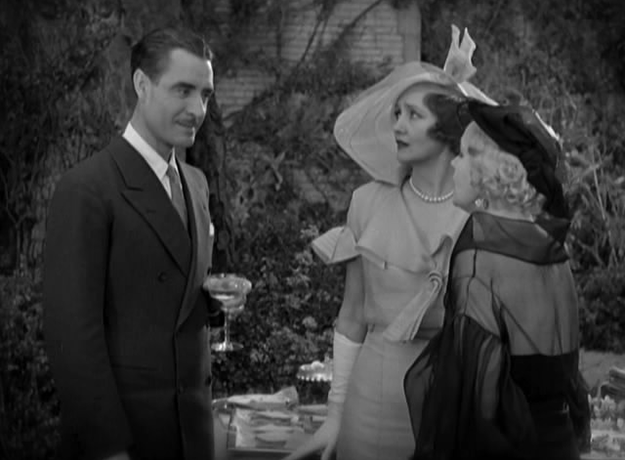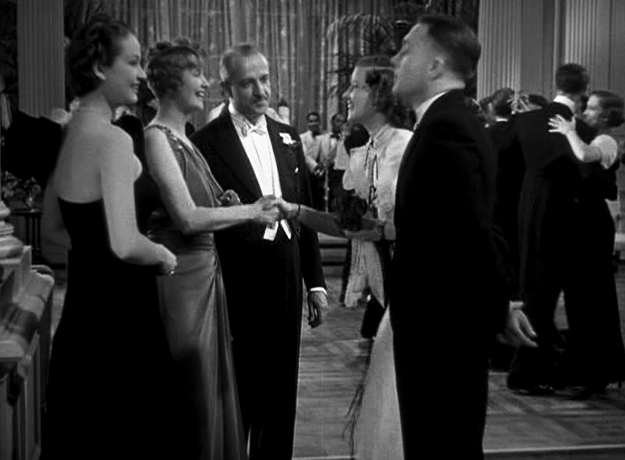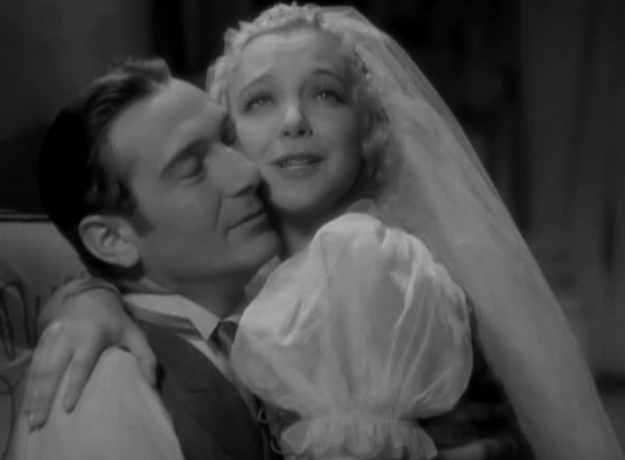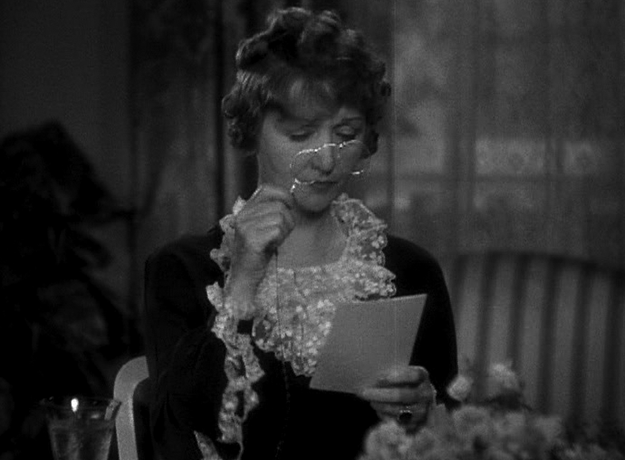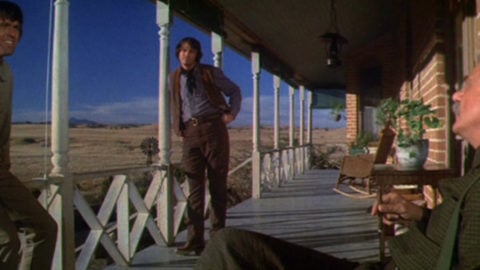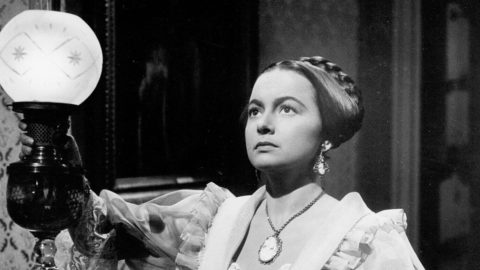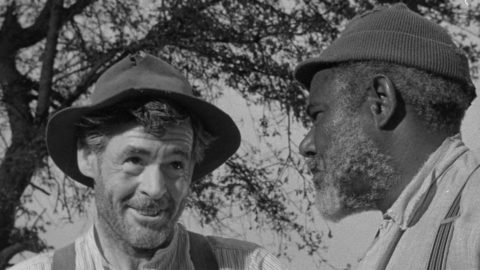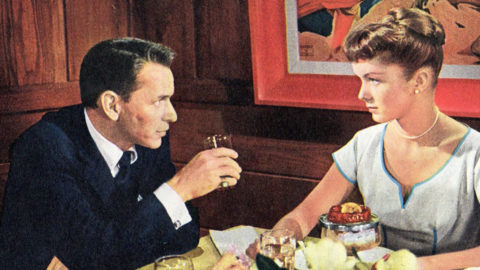TCM Diary: Hedda Hopper, Character Actor
Downstairs
Before she became the gossip-column terror of Tinseltown, Hedda Hopper made her living as an actress, a fact that Turner Classic Movies is celebrating (if that is the word we want) on the evening of July 9. The four-movie night starts with George Stevens’s Alice Adams, one of the best films Hopper was ever in, and continues with Downstairs, an underseen and splendidly acid tale of servant-and-mistress intrigue that was co-conceived and co-written by its star, John Gilbert.
Here’s the catch: Hopper’s roles are brief. Her later notoriety is what makes Hedda stand out. Your eyes search as soon as you spot the name in the credits, not because she’s going to steal the movie from the stars (in Alice Adams, that’s Hattie McDaniel’s job). No, you look for Hopper because from a distance of decades, you can play at being clairvoyant. You wonder what the people surrounding Hedda would have thought if they could see into the finger-wagging, Louella-Parsons-scooping, Red-baiting future.
Born Elda Furry to a butcher and his wife in 1885 (a date she often gave as 1890 once she became famous), Elda spent her formative years in the decidedly un-starry Altoona, Pennsylvania. When she was 14 years old, her father’s business went bankrupt, and her brothers went to work as bill collectors. For a few years young Elda helped them out, but dunning people was not her idea of a career. Like many another pretty woman, she saw her future on the stage.
Alice Adams
And so at age 18 she ran away to find the footlights, but here the pattern of her acting career became clear: whatever it is that makes a star, Elda Furry didn’t have it. Chorus roles, bit parts, if she worked hard enough maybe the understudy, that was Elda. But when in 1908 she landed a part in the chorus of The Pied Piper, she did have what it took to catch the eye of DeWolf Hopper, a leading man 27 years her senior. They married in 1913, and in 1915, the year the Hoppers moved to Hollywood, they had a son.
Elda was now Hedda, a name she adopted, some say, because DeWolf’s four prior wives were called Ella, Ida, Edna, and Nella, like some bizarre vaudeville sister act. Others say she changed her name on the advice of a numerologist; or maybe it was both. But surely the latest Mrs. Hopper was aware of the scandalous Henrik Ibsen play, Hedda Gabler, that had opened some 20 years previously. Maybe even then, she aspired to the manipulative power of Ibsen’s heroine.
Calling herself Hedda was as close as she’d ever get to a world-class acting role. By the late 1910s she may have realized that fact, but Hedda was nothing if not resilient. The Hoppers had decided there was good money in movies, and the man of the house signed a contract with D.W. Griffith’s Triangle Film Corporation. By now pushing 60, DeWolf was never going to be a matinee idol again. And even before they hit Hollywood, the marriage was in deep trouble—when a man racks up five wives, it’s not hard to imagine why—and canny, self-protective Hedda embarked on her own career, divorcing Hopper along the way in 1922.
Downstairs
She loved good clothes, she had a slim build and great posture, and that was all it took to make the tough-as-nails butcher’s daughter look like class to the casting agents. Year after year, Hopper could earn a living playing socialites. Mrs. Van This, Baroness de That. What she couldn’t do was break through to leads.
Hopper’s speaking scene as Countess de Marnac in Downstairs lasts less than a minute, yet it tells you everything you need to know about Hopper’s abilities. John Gilbert’s scheming chauffeur, Karl, shows up for his new job at the Viennese estate, where there is a servants’ wedding going on. The Countess spots him and, with considerable distress, informs him that he cannot possibly stay and take this job.
She’s not wooden or painful to watch, but Hopper’s job is to convey, in those few sentences, that the Countess slept with Karl. And she can’t do it. The voice, the posture, the way she leans toward Gilbert — she might as well be saying “I can’t believe you wore the same dress as me.”
Alice Adams
For Hopper watchers, Alice Adams is more intriguing. She shows up momentarily at the beginning as the hostess of the party where Katharine Hepburn’s title character makes a fool of herself, but Hopper doesn’t appear again until later. It’s a scene at breakfast in the family manse—Mrs. Palmer (Hedda), Mr. Palmer (Jonathan Hale), daughter Mildred (Evelyn Venable), and Arthur Russell (Fred MacMurray), the young cousin who is secretly in love with Alice. Mildred is wondering whether to invite Alice to her garden party. Hedda examines an invitation list with a lorgnette, describes Alice as a “pushing” young woman, puts words in her daughter’s mouth about Alice, all the while sweetly making sure Arthur doesn’t miss a thing. She listens intently as her husband relates gossip about Alice’s father. And then Mrs. Palmer is cordiality itself as she pushes Arthur into taking a walk with Mildred.
Hopper is much more convincing here, and no wonder. It’s essentially a preview of her whole later career: listen, examine, insinuate, move in for the kill.
As the years stretched on, Hopper built a gossip empire that extended to radio as well as her syndicated column. She promoted and wrecked careers and pursued politics that were well to the right of John Wayne. Hollywood fumed sotto voce at the Brown Derby, at dinner parties when the servants had left the room, to each other on the set after checking for eavesdroppers. Hedda couldn’t hack it as a star herself, they whispered, so now she has her revenge on the successful.
Maybe, maybe not. Whatever the skills she never quite learned on screen, off screen, when the cameras were off and tongues were wagging, Hedda Hopper had exactly what it took.
Downstairs and Alice Adams air July 9 on Turner Classic Movies.
Farran Smith Nehme writes about classic film on her blog, Self-Styled Siren, and recently published her first novel, Missing Reels. She is a member of the New York Film Critics Circle.



